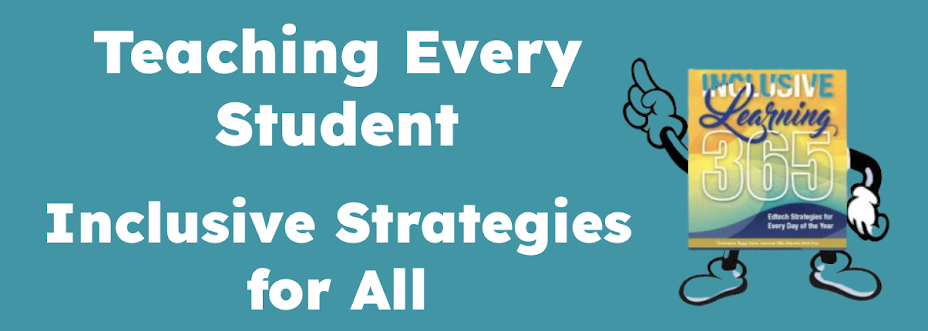
Scenario: you are asked to evaluate a High School student with learning issues, on an IEP for support in written language, reading, organization and study skills and social skills with goals written for each area.
There are three computers in the classroom with internet access, printer and scanner access.
You follow the SETT framework - identify additional appropriate student, environment and task information and develop your recommendations as follows:
IEP goal focus area - Reading (bright student reading four years below grade level)
- All material will be available in digital format so that it is accessible to student
- Recommend WordTalk, PowerTalk, Click,Speak and Accessibar be downloaded to each computer (All free, some offer highlighted words as they speak, color choices, can adjust speed and pitch)
- Recommend download higher quality voices from nextup.com - student can choose which voice sounds best to him.
- Show power of voice and color tools that are available in Word (which school has)
a. Recommend use insert sound object tool, drag to toolbar for easy access whenever student needs it. Teachers use it to record directions, embed prompts when completing assignments
b. Create default for student with customized font, font size, font spacing, font color and background color that supports student's learning style.
IEP Goal Focus Area - Written Language
- Offer student multiple methods of expression to demonstrate what he knows.
- Pre-writing activities – use free online graphic organizers such as bubbl.us, mindomo, mindmeister, Mind42
- Explicitly teach spell check, synonym support to reflect use of grade level vocabulary
- Teach use of text-to-speech tools recommended above to improve editing skills
- Allow use of voice tools such as “insert sound object” in Word or Voice Thread
- Teach use of tools embedded in Word – highlighting, autosummarize, outlining, etc.
- Download electronic flashcards (for example, Cue Card, StudyCard) tools available on internet or use internet flashcard resources (for example, StudyStack
- Set-up student to use iGoogle or similar free resource, as customized homepage with tools necessary for organization success – To-do lists, Notes, homework assignments
- Create scenarios using digital video tools such as cartoon callouts with graphics in Word, Voice Thread, PhotoStory, Flickr with Captioner etc, that promote social skill development.
(And you know that educators are more likely to incorporate tools that are easy to use and readily available and your goal is to promote independence and success for the student.)
Is this AT? Why or why not? Does AT for the high incidence populations have to cost money?
I strongly believe that this is assistive technology as defined by IDEA 2004 as these are "off-the-shelf" and "increase, improve or maintain" the functional abilities of a student with disabilities. It's all about independence and success and I believe we are setting a student up for success when we use these types of tools that are accessible ANYWHERE.
Your thoughts?
photo credit - http://flickr.com/photos/leefly/416980365/

4 comments:
hi Karen:
You are right on target- I have been talking to other educators about how the landscape is changing and how Web 2.0 is going t be a "disruptive technology" that makes us rethink not only how we implement but what software we use. Brian
Sorry for the belated response, but this post struck a chord with me - I agree with you and Brian - the proliferation of web apps in the last few years has opened up a world of low- to no-cost options. The only roadblock is the availability of high-speed Internet at students' homes - in an ideal world, students would have access to these tools at home as well as school (e.g. Mindmeister, Flickr, etc.).
I sat in on an AT session at a school psychology conference recently, and was shocked at the price tag on some of the items we "played" with. Read/write web apps, while not 100% stable, offer some fine alternatives, and I would think school districts would jump at the chance to meet students' AT needs for free.
Damian,
Thanks for your comments. Did you read my post called "Free Tech Tools For UDL in All Classrooms?" (It's my most popular post and you can find it on the right side of the blog.)
Please share these resources with other educators where you work. The availability of these resources can make all the difference for our struggling students.
The only tool that you have to purchase is good quality text-to-speech voices which are about $35 per license from http://nextup.com. The computer voices installed on the Windows OS are too robotic for many students.
thanks...more info for me to eat up!
have a great day Karen - I'll certainly be back!
Tracy
Post a Comment